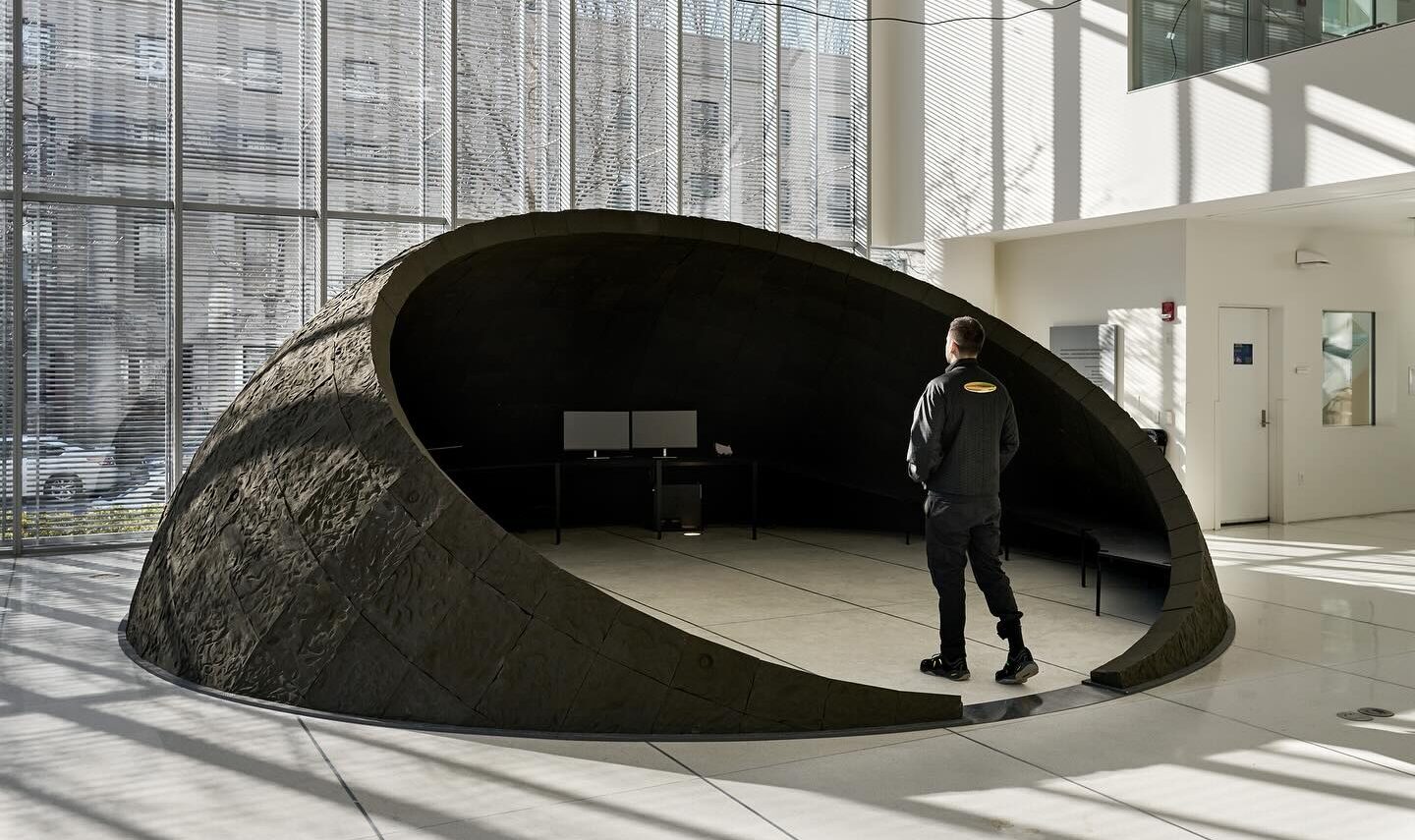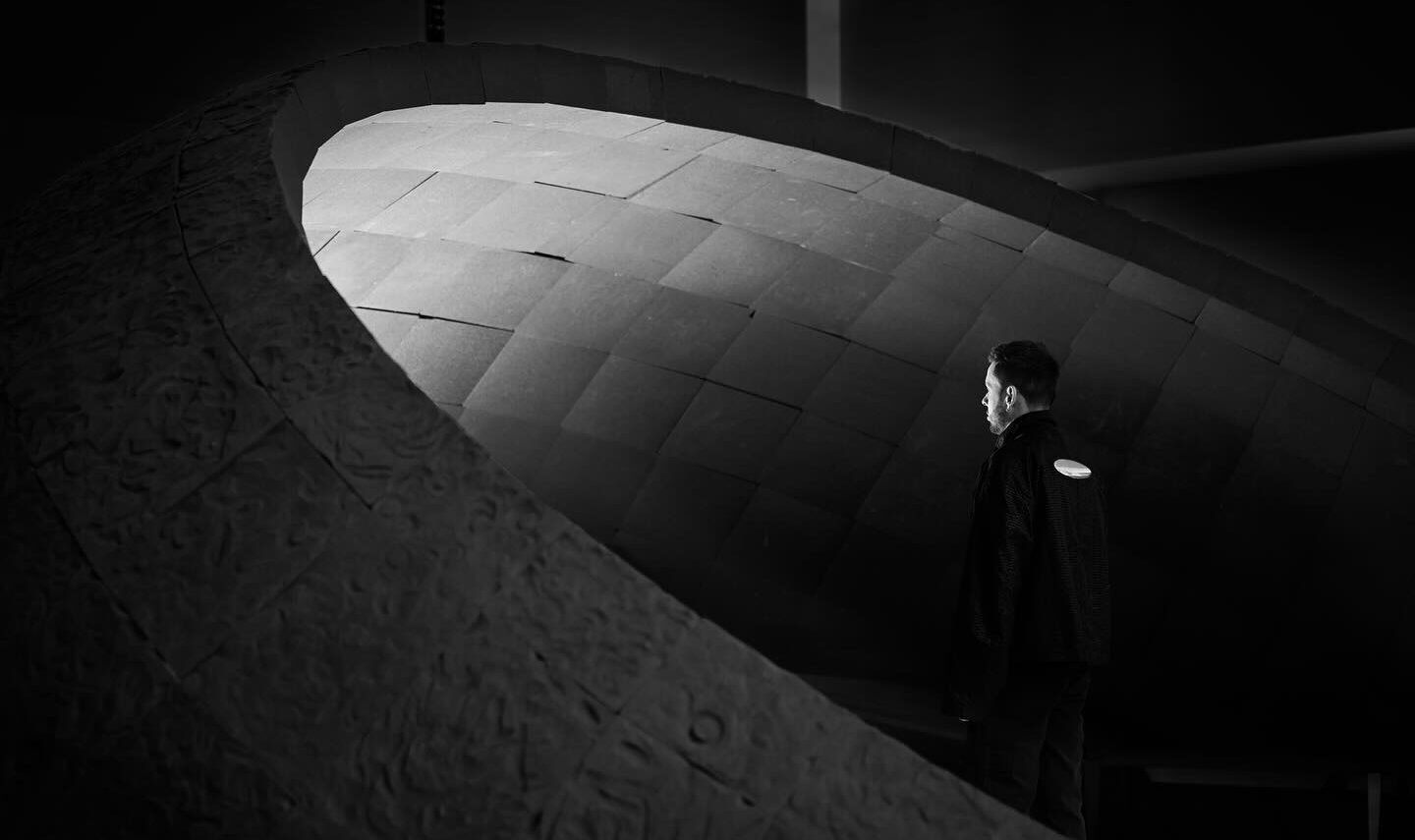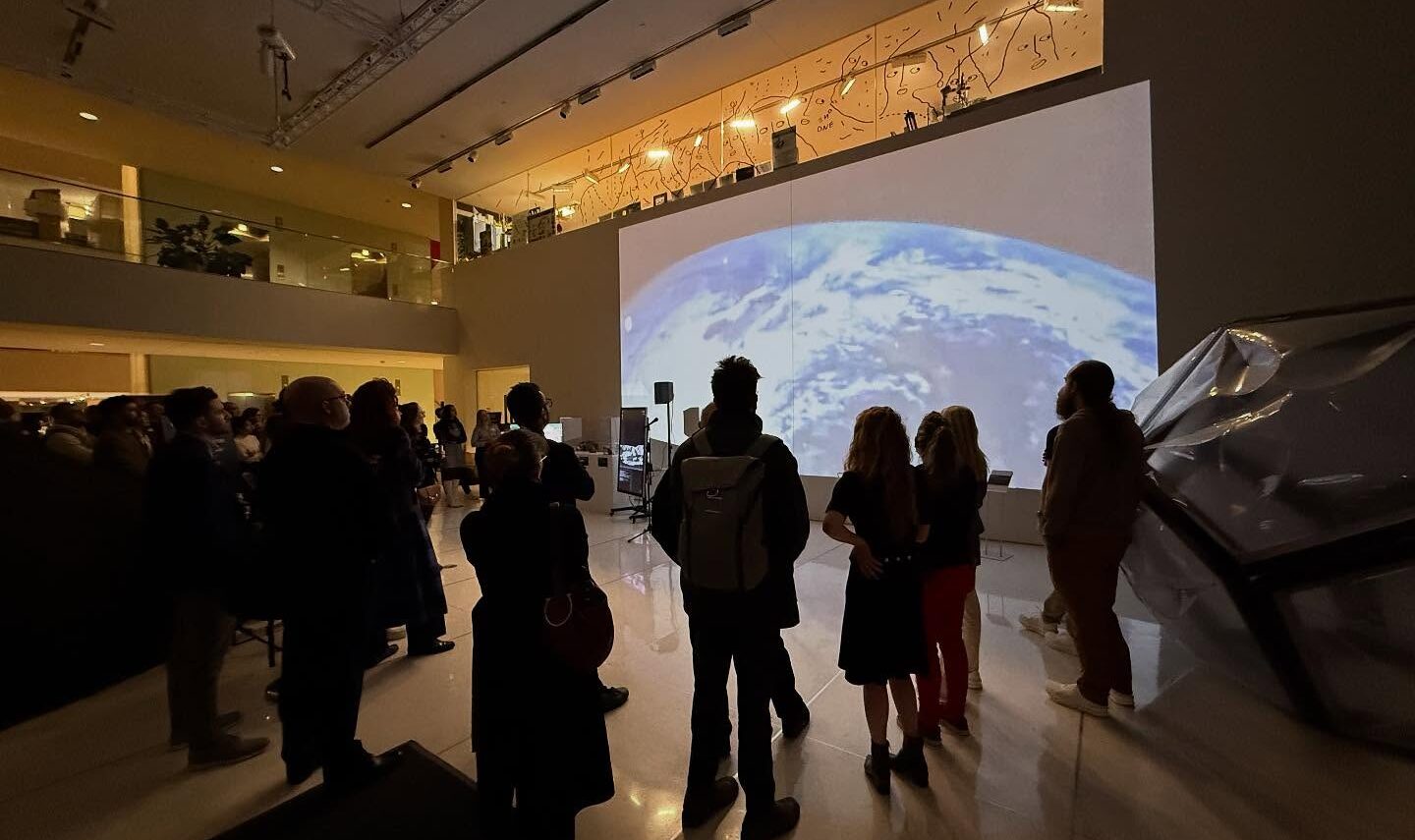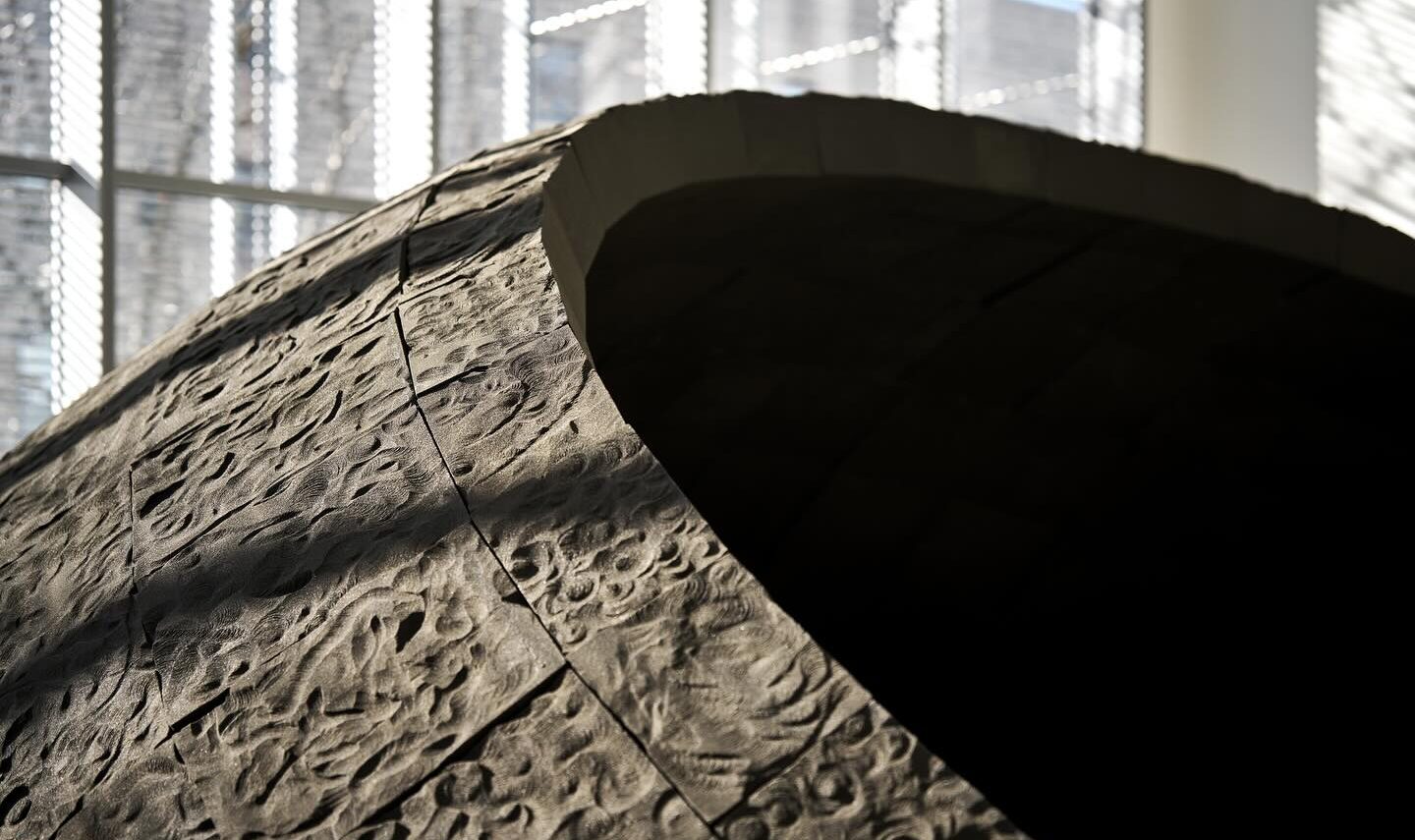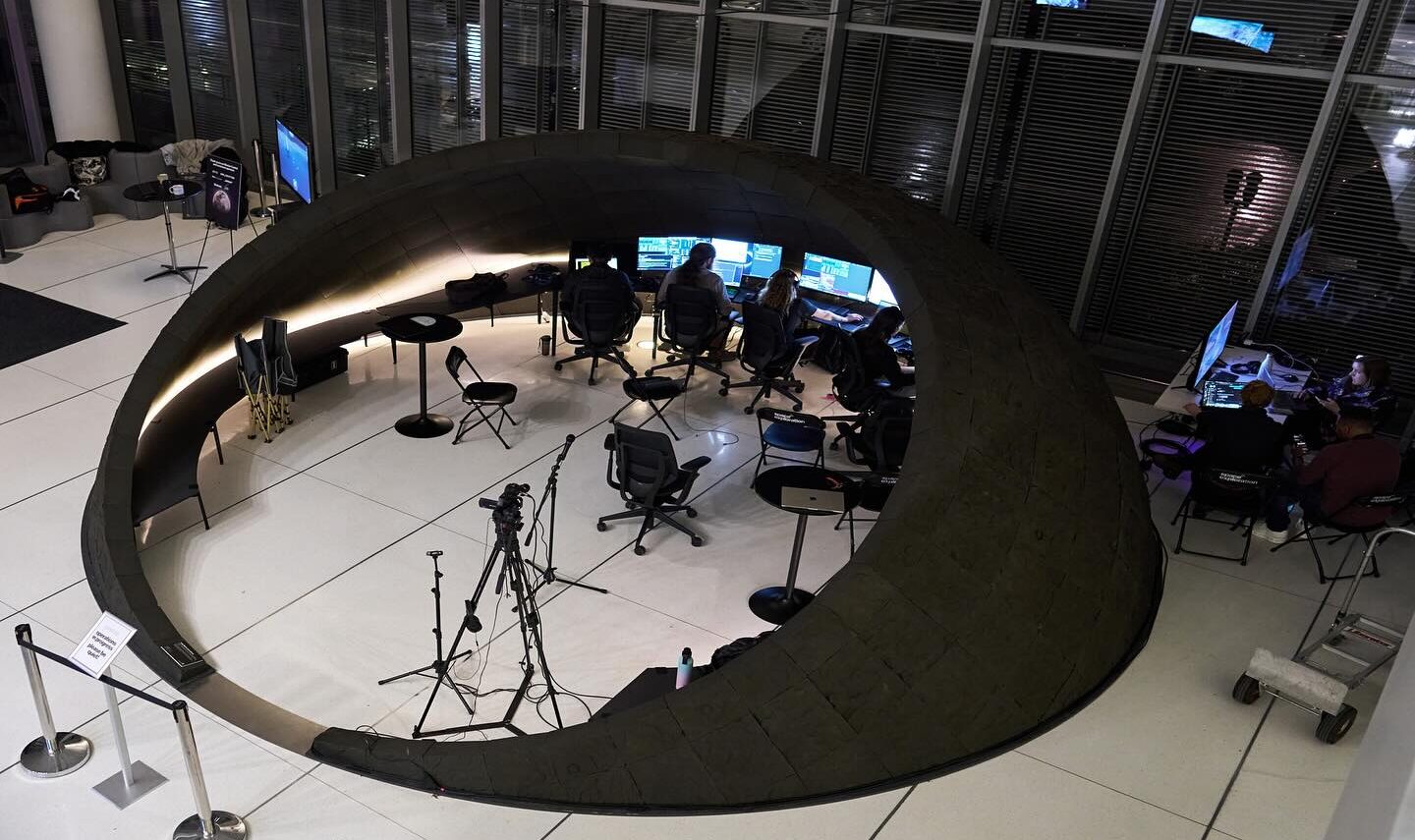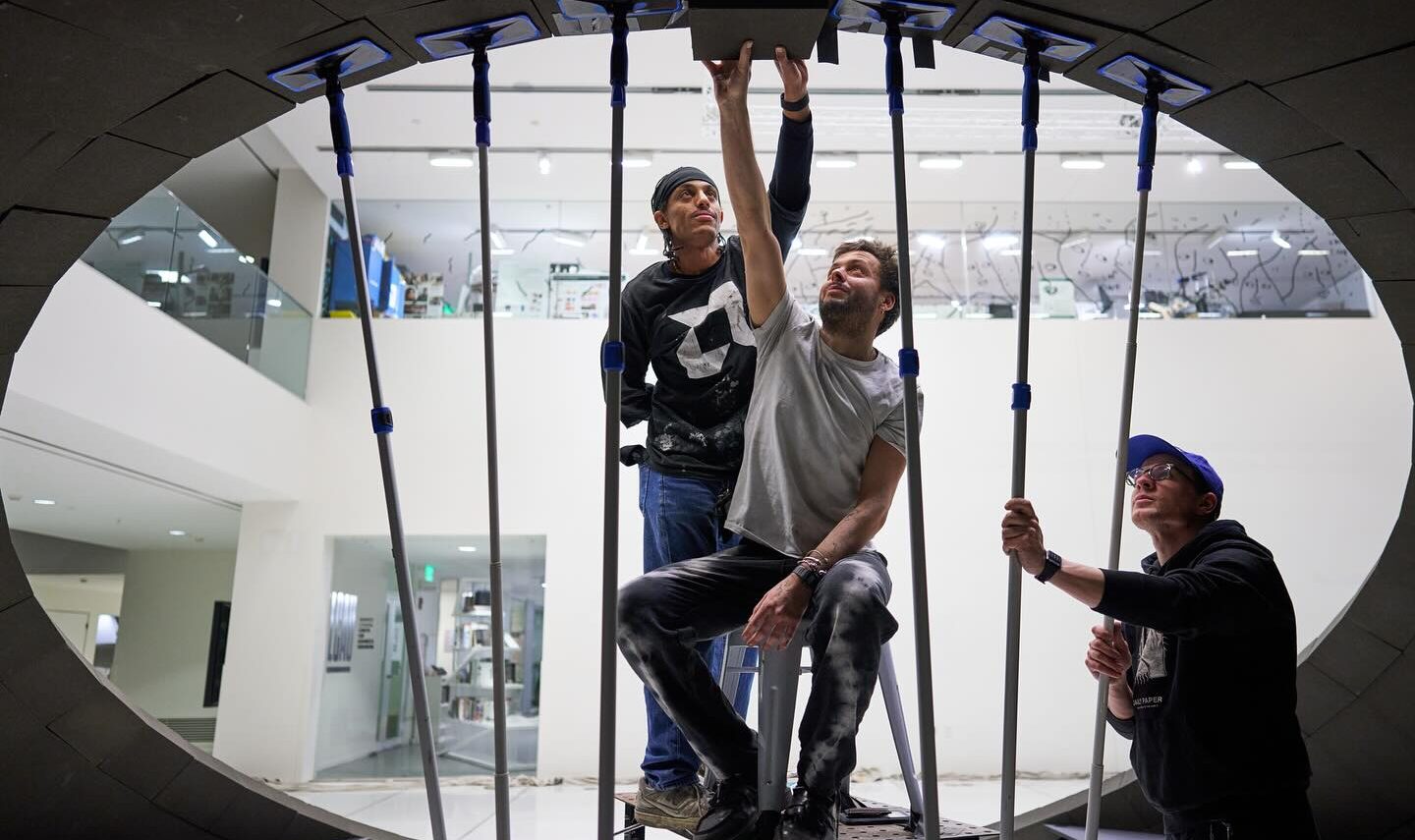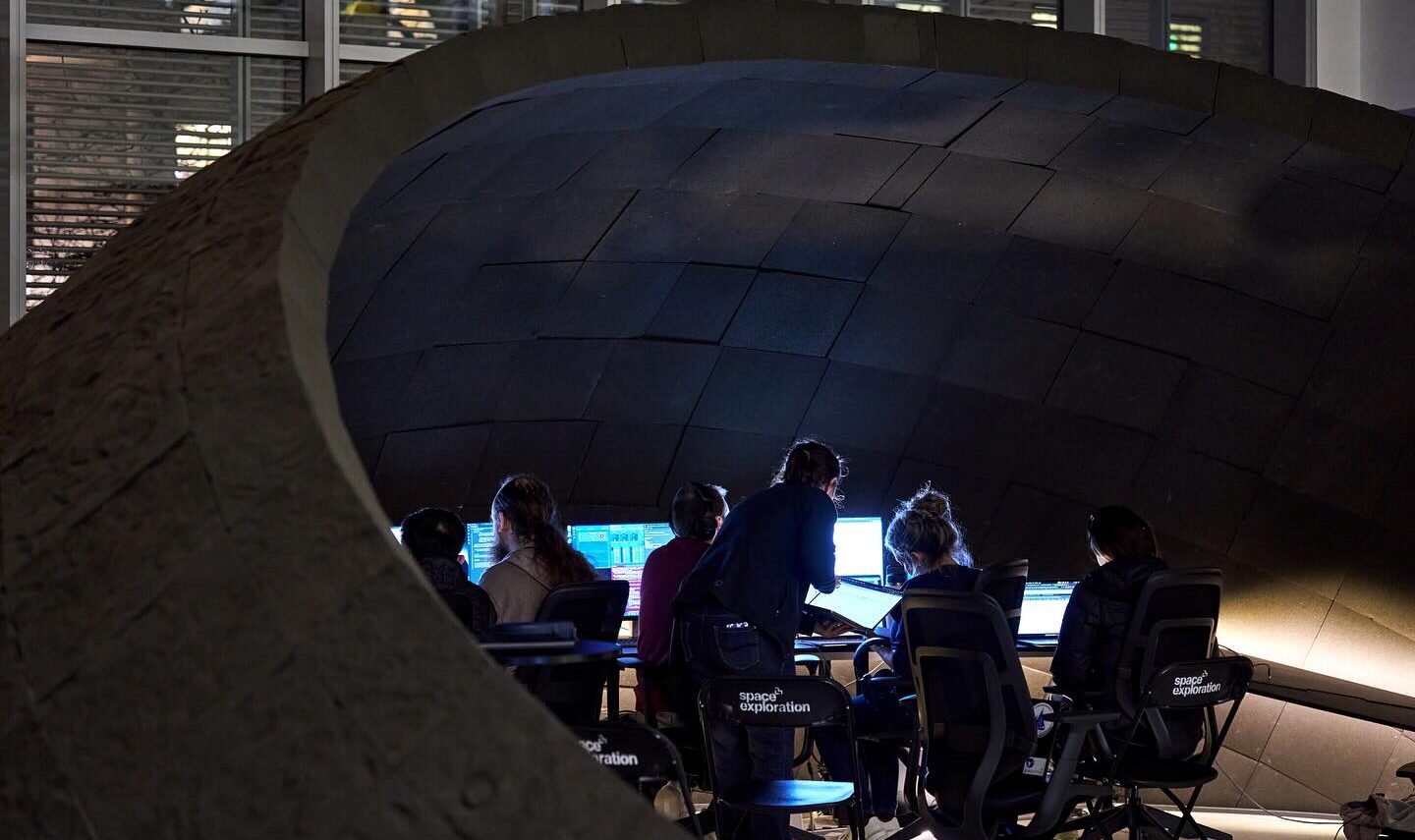The Lunar Mission Control is a creative project between MIT Space Exploration Initiative and Inploration, which was built and designed by MIT Architecture using foamed glass and basalt materials. The full-compression dome-like structure allows visitors to experience live lunar operations and interact with artistic projections made by Inploration. Together, this interdisciplinary team of thinkers and makers rethink traditional mission control stations to be more accessible and artistic —welcoming public engagement, conversation and reflection.
Through artistic projections, live mission operations, and interactive elements, the installation creates moments of wonder and understanding that transcend traditional boundaries between art and science. It offers visitors direct engagement with lunar exploration while inspiring deeper reflection on our place in the cosmos. Inploration co-founders Lawrence Azerrad and Richelle Ellis guide the creative vision, working alongside Cody Paige, architects Mateo Fernandez and Skylar Tibbits, and planetary science software engineer Don Derek Haddad. The MIT Space Exploration Initiative (SEI) and Inploration unite visionary thinking with technical innovation in this ambitious project.
On February 26, three MIT research payloads were launched to the moon aboard a SpaceX Falcon 9 rocket. After reaching the moon, the payloads were deployed on a Lunar Outpost MAPP rover at the moon’s south pole. This project is a stunning example of linking art, design, science and architecture to create new ways to connect to space.
